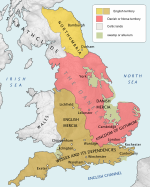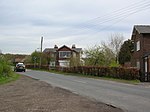Strensall Common
Sites of Special Scientific Interest in North YorkshireUse British English from October 2023Villages and areas in the City of York

Strensall Common is 1,430 acres (578.75 ha) of common land to the south-east of the village of Strensall, in the City of York, England. The land is recognised as an SSSI and a Special Area of Conservation, with much of it being owned and maintained by the Ministry of Defence who have a rifle range on its southern edge. Strensall Common is the only known site in England where the butterfly epione vespertaria has been recorded. The common was also noted historically as being a collection site for the thread of the araneus diadematus spider. The thread was used as a graticule in optical instruments.
Excerpt from the Wikipedia article Strensall Common (License: CC BY-SA 3.0, Authors, Images).Strensall Common
Flaxton Road,
Geographical coordinates (GPS) Address Nearby Places Show on map
Geographical coordinates (GPS)
| Latitude | Longitude |
|---|---|
| N 54.029 ° | E -1.008 ° |
Address
Strensall Training Area
Flaxton Road
YO32 5XQ , Strensall with Towthorpe
England, United Kingdom
Open on Google Maps










